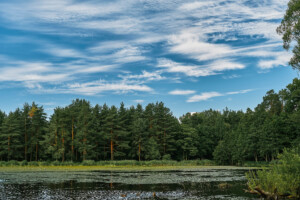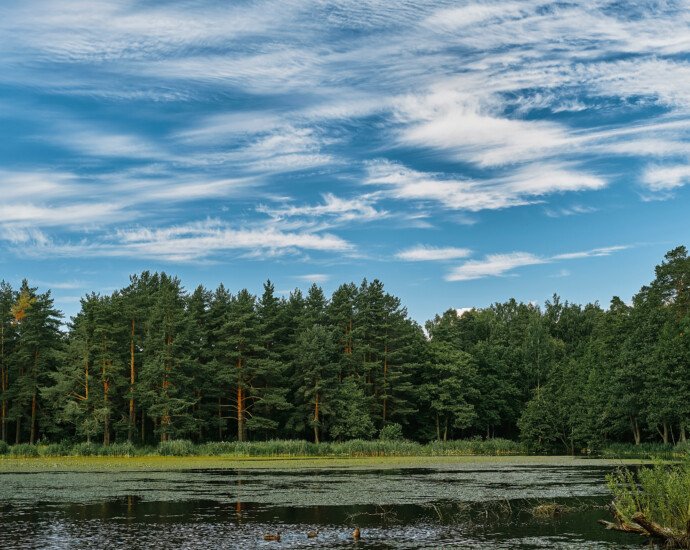 Explore Lyndhurst’s Historic Charm Discover the rich history and quaint charm of Lyndhurst, the beating heart of the New Forest
Explore Lyndhurst’s Historic Charm Discover the rich history and quaint charm of Lyndhurst, the beating heart of the New Forest
Lyndhurst is a large town and common ward situated in the New Forest National Park in Hampshire, England. Functioning as the governing center and is “capital of the Forest”, despite its quite small size.
Sometimes ignoring the tourism traffic congestion in the area, Lyndhurst remains a favoured destination among tourists, boasting numerous boutique shops, art galleries, cafes, museums, taverns, and accommodations. The village houses the district council due to its status as the capital of the New Forest.
Lyndhurst History:
The name “Lyndhurst” originates from Old English, meaning ‘Wooded hill with lime-trees growing’, composed of ‘lind’ (‘lime-tree’) and ‘hyrst’ (‘wooded hill’). First mentioned in the Domesday Book of 1086 as ‘Linhest’, it was part of the royal lands of the New Forest. The manor passed through various noble families until 1667 when it was granted to Charles Paulet, 1st Duke of Bolton. Later, it returned to royal possession until deemed unimportant, leading to its transfer to the Crown. A royal park, attached to the manor, covered an area of 500 acres in 1299, now where the Lime Wood Hotel stands.
New Forest Heritage Center:
If you’re exploring the local area, make sure to visit one place and that is New Forest Heritage Centre. Entry to this centre is completely free, so there’s no need for any kind of ticket. It houses a museum, an exhibition area, a gift shop, and a cafeteria. Every year, more than two hundred thousand people visit the museum, coming to see the displays and interactive exhibits, which include the grave of Arthur Conan Doyle, the creator of Sherlock Holmes, who was buried in the Forest.
Nestled within the picturesque National Park lies the charming village of Minstead. Here, amidst the rolling hills and ancient woodlands, you’ll find All Saints Church, the final resting place of Sir Arthur Conan Doyle, the literary legend who breathed life into the iconic detective Sherlock Holmes.
Doyle, born in 1859, was a prolific writer whose works transcended the genre of detective fiction. He practiced medicine before embarking on a writing career, and his keen mind for observation, honed during his medical training, undoubtedly influenced the brilliant deductions of his most famous creation.
Doyle’s legacy extends far beyond Sherlock Holmes. He penned historical novels, science fiction adventures, and championed social causes close to his heart. Yet, for countless readers worldwide, Minstead churchyard remains a hallowed ground, where a simple headstone under a grand tree marks the final chapter for the man who gifted us the world’s most celebrated detective.
The Wild Parkland Ponies
The Forests area is popular for its New Forest Ponies, claimed by neighbouring plebeians whose families have ages-old freedoms to run their horses wild across the woodlands. You can find out about more about these common families and their lifestyle in past times.
The historical heritage center likewise features the significance of trees in the climate and grandstands different tree species seen in the forestry and how each were made due.
Furthermore, the New Woods Weaving, charged in 1979, honours the 900th anniversary of the creation of the New Forest and portrays significant occasions in its set of experiences.
Tourists can likewise find out about the woodland’s job in The Second World War and appreciate intelligent exercises for the entire family, including tests and sprucing up on local history.
The Christopher Pinnacle Library gives further assets to those inspired by more profound perusing or exploration. The middle routinely has presentations, displaying neighbourhood ability like the New Forest Camera Club‘s staggering photos. With considerably more to investigate, the Heritage Centre offers some incredible insights for passing a rainy day or a cultural visit whilst visiting the region.
The centre is free, however, donations to help with the centre’s running expenses are very much valued.
Restaurants and foods:
In the core of the captivating village streets, culinary pleasures coax guests from all over. The town’s cobblestone roads are fixed with an embroidery of cafés, each offering a special gastronomic encounter.
At the various cafes and bakeries, the fragrance of newly prepared bread and stewing stews floats through the air, welcoming bystanders to enjoy generous English admission.
The various Cafes and Bistro’s that align the summer streets offer a ranch to-table feasting experience like no other. Here, cafes enjoy occasional dishes made with scrounged fixings, moving taste buds on an excursion through the backwoods’ abundance.
For those looking for a sample of worldwide style, a more international selection of restaurants entice palates with fascinating flavours and lively tones. The fragrant curries, sizzling baked dishes and soft naan breads summon the clamouring markets of far off lands, carrying a dash of worldwide combination to the village’s culinary scene.
For those wanting to advertise their businesses to the tremendous crowd of area’s residents or tourist visitors, kindly think about publicising your organisation with the New Forest Advertiser. This highly regarded media distribution arrives with a wide and very quickly growing local readership and serves as an important asset for tourist guests from outside the area, arranging their holidays within the district.
Don’t miss the elegance of the evening tourism atmosphere, where you can enjoy fine wines and gourmet creations under the moonlight. Visit the village today and embark on a gastronomic adventure that celebrates the flavours of the parkland and beyond! If you are visiting the area and camping, please don’t forget our article regarding the Denny Wood campsite – ideally located nearby to the village for exploring the village and surrounding National Parkland.



